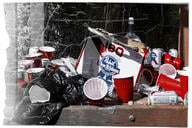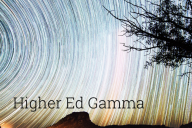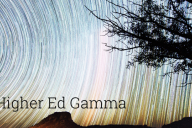You have /5 articles left.
Sign up for a free account or log in.
In 1916, a German author and journalist published a short story about a middle-aged man who is obsessed and later becomes sexually intimate with a preadolescent girl. The tale’s title is Lolita.
Did Vladimir Nabokov base his 1955 novel on that earlier work? Experts disagree. But if he did recast that earlier tale, if he did “consciously borrow and quote,” would that call the value of his book into question?
I don’t think so.
Plagiarism, data manipulation and other forms of academic misconduct are much in the news. I do not countenance cheating in my classes, but I fear that academics haven’t thought as clearly or rigorously about academic integrity as we might. After reviewing the literature on plagiarism, certain conclusions strike me as true.
- Different disciplines tend to focus on particular aspects of academic integrity. In history, borrowing words is a capital offense, as the classicist Brett Devereaux has observed. But other fields place a higher premium on the misuse of (or unwillingness to share) data or on the originality of research findings.
- Professional societies and, in certain cases, scholarly journals have grown increasingly unwilling to police intellectual integrity, academic misconduct and plagiarism, no doubt out of legal liability concerns. Brian Gratton, an Arizona State history professor, quite rightly decried faculty committees that are “reluctant to hold a professor accountable for what they condemn in students.”
- As the statistician, political scientist and expert on causal inference Andrew Gelman has observed, plagiarism by high-profile academics is rarely punished.
- As Jonathan Bailey, a leading authority on academic dishonesty, has pointed out, only rarely are accusations of plagiarism merely about using someone else’s words, ideas or work without giving appropriate credit. These are often excuses for going after someone for other reasons.
My takeaway: plagiarism makes academics queasy because each of us might, unwittingly, be vulnerable to such accusations. This anxiousness led Ian Bogost, a video game designer and a professor in the film and media studies program Washington University in St. Louis, to use iThenticate to investigate the integrity of his own scholarship. Spoiler alert: his dissertation was “clean.”
Who first said, “Good artists copy; great artists steal”? Was it Steve Jobs? Pablo Picasso? T. S. Eliot? Or none of the above?
Quote Investigator, the go-to source for information on the origin of famous phrases, attributes the quotation to an 1892 essay entitled “Imitators and Plagiarists” by the now-forgotten English journalist and critic W. H. Davenport Adams. That essay drew a distinction between imitation, which “was commendable,” and theft, which “was unworthy.”
As Adams quite rightly argued, even the greatest writers have antecedents, forerunners and precursors.
That theme is taken up by the great literary historian David S. Reynolds in his classic 1988 account of popular American literature in the age of Emerson and Melville. Beneath the American Renaissance explores the complex relationship between the pulp fiction, dime novels and popular tracts dismissed, at the time, as drivel or dross and the canonical texts by the era’s greatest writers.
You may perhaps recall that Melville’s chapter in The Confidence Man on the metaphysics of Indian hating is a word-for-word appropriation of an offensive, inflammatory popular attack on Native Americans.
John Lienhard, a member of National Academy of Engineering who is the voice of the widely rebroadcast radio episodes called The Engines of Our Ingenuity, has demonstrated that the inventions attributed to Samuel F. B. Morse, Alexander Graham Bell, Thomas Alva Edison and countless other innovators drew upon the work of other inventors.
Isaac Newton was quite forthright about his indebtedness to earlier scholarship. As he wrote in a famous 1675 letter, “If I have seen further [than others], it is by standing upon the shoulders of giants.” But somewhat similar language had previously been used by others, including the 12th-century French scholar Bernard of Chartres, the 16th-century Spanish mystic Diego de Estella and the 17th-century English metaphysical poet George Herbert.
True originality, a concept celebrated by the Romantic poets, is rare. Tempura, for example, evolved out of a Portuguese staple brought to Japan by Portuguese missionaries and traders during the 16th century.
To help us think more seriously about scholarly originality, borrowing, appropriation and theft, we might turn to the arts. As the novelist and essayist Jonathan Lethem noted in a 2007 essay, “The Ecstasy of Influence” (which is my source for the Lolita reference), the arts have always been a crucible in which ideas, styles and themes “are continually recast.”
This is especially the case in music, where various musical elements—beat, lyrics, melodies, meter, rhythms, structure, tempo, timbre and tones—are repeatedly reworked, remixed, recycled and recreated. That’s a subject explored in depth in a 2015 book that deserves much more attention than it has received: Clinton Heylin’s It’s One for the Money: The Song Snatchers Who Carved Up a Century of Pop & Sparked a Musical Revolution.
As Heylin reveals, many of the songs that we think of as original are, in fact, derivative. We learn, for example, that the melody of Woody Guthrie’s “This Land Is Your Land” came from the Carter Family’s “When the World’s on Fire,” which, in turn, came from one of their friends, Leslie Riddle. Or that Bob Dylan’s “Blowin’ in the Wind” drew its melody from an antislavery song, “No More Auction Block.” Or that “Amazing Grace” is sung to the tune of a British parlor song, “New Britain.” Or that the civil rights anthem “We Shall Overcome” grows out of a gospel song, “I’ll Overcome Someday,” by the Methodist minister Reverend Charles Tindley and is sung to the tune of two 18th-century songs, “Prayer of the Sicilian Mariners” and “O Sanctissima.”
Somewhat similarly, W. C. Handy, the self-proclaimed “father of the Blues,” drew upon pre-existing elements of Black song to stitch together classics like “St. Louis Blues.”
Heylin, however, is not a credit scold. Instead, he describes his book as “one long love letter to creative thievery.” Were “Wimoweh” and “The Lion Sleeps Tonight” examples of musical theft? As Heylin shows, the answer is complicated. Creativity in the arts hinges on interaction with earlier influences. Plagiarism, the journalist Paul Greenberg quipped, is the highest form of flattery.
Heylin’s basic argument is that popular music thrives when composers, lyricists and performers can borrow each other’s riffs, styles and lyrics and that the stringent enforcement of copyright has had a profoundly negative effect on recent music, as creators try to avoid lawsuits.
Among the book’s most striking themes are these:
- Copyright law has “replaced a communal music culture with the erroneous ‘idea that a popular songwriter was de facto an Artist,’ who would pluck new compositions out of thin air”—a view that misunderstands how song creation actually works.
- The bulk of profits have gone not to composers, lyricists or performers, but to the “song snatchers,” those who hold publishing rights. Even John Lennon and Paul McCartney lost hundreds of millions of dollars in royalties to their original publisher, Dick James. Among those who claimed publishing rights to songs they didn’t write include, ugh, Pete Seeger.
- Too often, artists, composers and lyricists claim sole credit for works that are products of collaboration or that are offshoots of existing works, largely for commercial gain.
In short, the “industries of cultural capital” do not profit from the creative process, except indirectly: from exploiting legal claims, often to works that they had no hand in producing.
You may recall Harold Bloom’s argument in his 1973 book, The Anxiety of Influence: That every creative work, to a varying extent, inevitably borrows, reshapes, modifies and integrates elements of theme, literary style or structure from those works that came before them. According to the Yale critic, creative artists use various strategies, including:
- Clinamen: creatively misinterpreting or misreading a precursor’s work.
- Tessera: taking an acknowledged work in a different direction.
- Kenosis: purposely breaking away from the precursor’s style or thematic concerns.
- Daemonization: engagement and reinterpretation of a precursor’s style or themes.
- Askesis: a strategy in which creative artists self-consciously minimizes their own artistic presence in an attempt to free themselves from the overwhelming legacy of their precursors.
- Apophrades: homage to but also transcendence beyond a precursor’s achievement.
Bloom’s argument was that all artists are in constant dialogue with the past. Whether by paying tribute to the past or transforming an earlier legacy, innovation is best understood not as a repudiation of the past but is rather about understanding, absorbing and ultimately reinterpreting earlier works.
In his “Ecstasy of Influence” essay, Lethem underscores the importance of sampling, remixing, satire and collage in the contemporary literature and the visual and performing arts. Creative works inevitably involve references and echoes. In his words,
“Igor Stravinsky’s music and Daniel Johnston’s, Francis Bacon’s paintings and Henry Darger’s, the novels of the Oulipo group and of Hannah Crafts (the author who pillaged Dickens’s Bleak House to write The Bondwoman’s Narrative), as well as cherished texts that become troubling to their admirers after the discovery of their “plagiarized” elements, like Richard Condon’s novels or Martin Luther King Jr.’s sermons—it becomes apparent that appropriation, mimicry, quotation, allusion and sublimated collaboration consist of a kind of sine qua non of the creative act, cutting across all forms and genres in the realm of cultural production.
“Most artists are brought to their vocation when their own nascent gifts are awakened by the work of a master. That is to say, most artists are converted to art by art itself. Finding one’s voice isn’t just an emptying and purifying oneself of the words of others but an adopting and embracing of filiations, communities and discourses … Invention, it must be humbly admitted, does not consist in creating out of void but out of chaos.”
Ideas do not arise full-grown, motherless and in a full suit of armor, like Athena out of Zeus’s head. The intellectual historian Gertrude Himmelfarb made a strong case that Darwinian evolution was deeply indebted to Thomas Malthus’s 1798 “Essay on the Principle of Population.”
Nor do ideas arise in a vacuum. My most impactful idea, which I wrote about in a 1988 book entitled Domestic Revolutions, at an early stage in the culture wars, was that the family was not a fixed, unchanging static unit or Platonic cultural ideal but, rather, an ever-shifting entity, whose roles and functions, size and composition, structure and dynamics were constantly evolving. In retrospect, it’s clear that I was myself indebted to a host of scholars—Peter Berger, Thomas Luckmann, Thomas Kuhn and the Deconstructionists, among others—who, I think it’s fair to say, profoundly shaped my thinking. Their ideas were in the air.
We cite our sources not merely to avoid charges of plagiarism but to acknowledge that our work, even the most original, owes deep debts to our predecessors. After all, we, as academics, are participants in a community of inquiry, and our collective endeavor requires levels of trust that can easily be shaken.
John Donne (quoted by Lethem) had it right:
“All mankind is of one author and is one volume; when one man dies, one chapter is not torn out of the book, but translated into a better language; and every chapter must be so translated.”
In his classic “Lobachevsky Lyrics” (quoted by Greenberg), Tom Lehrer, the songwriter, satirist and mathematician, wrote, “in one word” the great Lobachevsky “told me secret of success in mathematics: Plagiarize!”
“Let no one else’s work evade your eyes/ Remember why the good Lord made your eyes/ So don’t shade your eyes/ But plagiarize, plagiarize, plagiarize—/ Only be sure always to call it please … Research!”
As Lethem points out, academics and artists are members of a gift economy that is all too often treated as a matter of commodity exchange. We enclose the cultural commons at a great cost. Be sure to acknowledge your sources—that is our currency and as an act of respect. But be careful not to treat ideas and creative works as private property. Innovation in the world of ideas and of art requires us to engage, appropriate, modify, remix, rework and revise.



